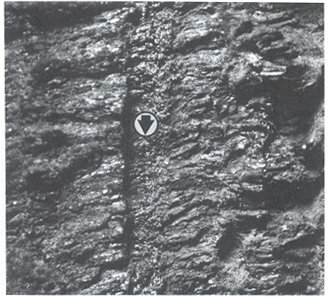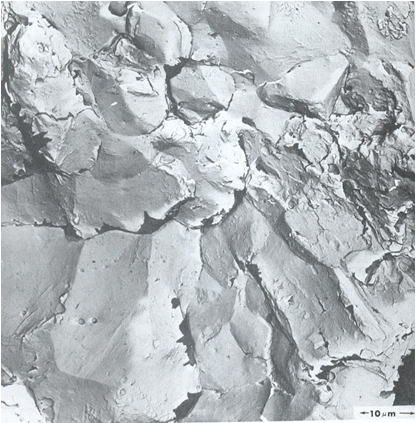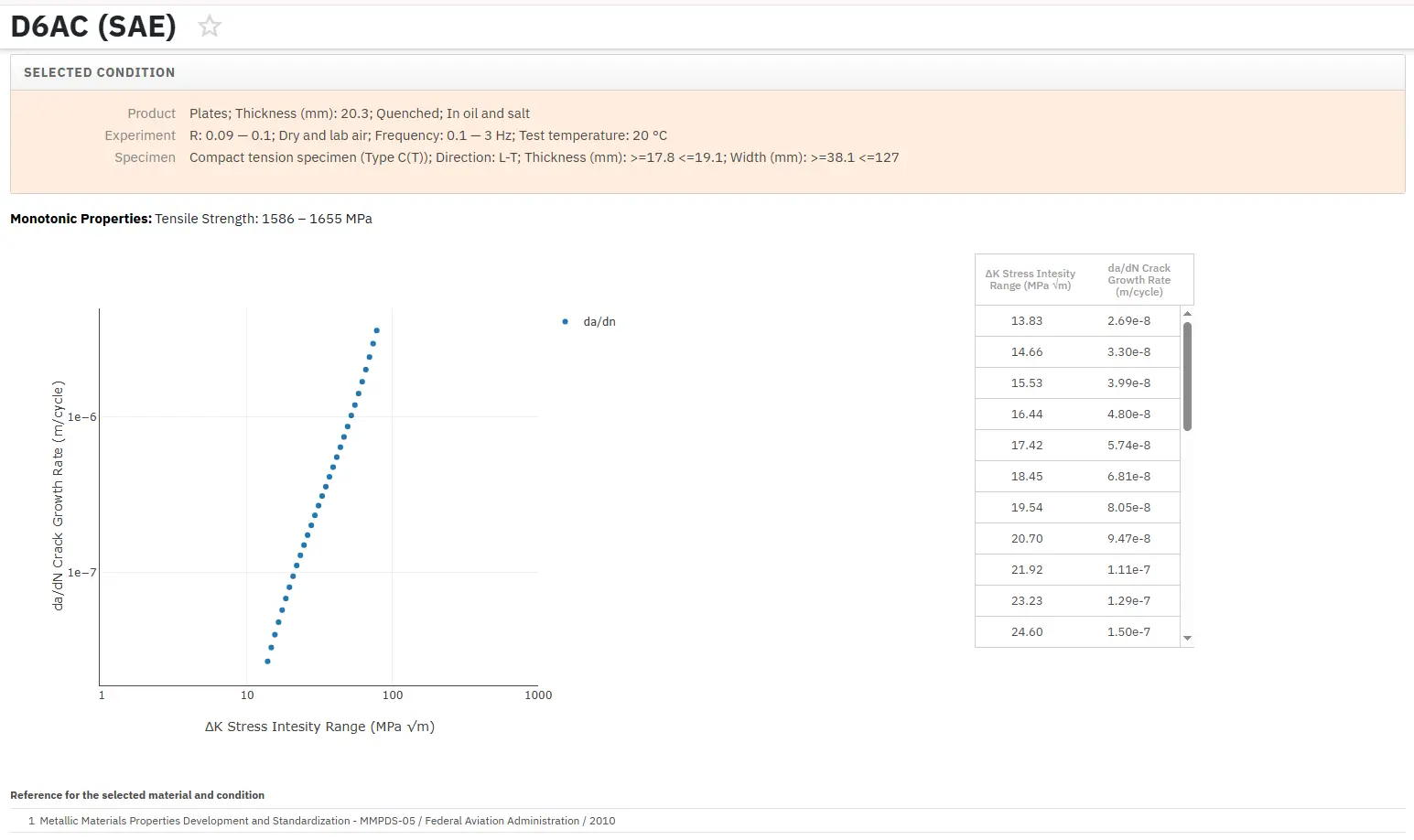Stress Corrosion Cracked Welds in NiCrMo Steel
Abstract
Correlations were found between the fractography of stress corrosion cracked (SCC) surfaces and the macrostructure of shielded metal arc weldments of a NiCrMo steel. The fractography of the stress corrosion regions revealed fracture modes consisting of cleavage, microvoid coalescence, and intergranuiar separation.
Cleavage was often associated with a coarse irregular fracture, whereas with microvoid coalescence the fractures were generally flat. The macro-structures corresponding to intergranuiar separation consisted largely of coarse equiaxed grains and to a lesser extent of columnar grains.
Correlations were found between the fractography of stress corrosion cracked (SCC) surfaces and the macrostructure of shielded metal arc weldments of a NiCrMo steel. The fractography of the stress corrosion regions revealed fracture modes consisting of cleavage, microvoid coalescence, and intergranuiar separation. Cleavage was often associated with a coarse irregular fracture, whereas with microvoid coalescence the fractures were generally flat. The macro-structures corresponding to intergranuiar separation consisted largely of coarse equiaxed grains and to a lesser extent of columnar grains.
The microstructure of high-strength weld metal shows a high degree of complexity which is attributable to the rapid solidification of the weld pool, the quenching effect of adjacent cold metal, the thermal cycling effect of successive weld passes, and segregation in the weld metal as a consequence of heterogeneous austenite. The fractography of weld metal is equally complex.
Cantilever bend tests were carried out in order to determine the critical stress intensity, K1SCC, of the weldments. The specimens were tested in a 3½ percent sodium chloride solution with three different electrochemical conditions imposed on them:
- freely corroding,
- galvanically coupled to zinc, and
- galvanically coupled to magnesium.
One fractured specimen representing each of the three test conditions was selected for examination. The fractures investigated comprised only one of the mating surfaces of each specimen. The stress corrosion areas examined fractographically by transmission electron microscopy. The longitudinal center of each fracture surface corresponds to the mid-thickness region, whereas the longitudinal areas midway between the center and edges of each fracture surface correspond to the quarter-thickness regions.
Mid-thickness is at the root of the double-V weld and represents the weld metal with the most base metal dilution. Weld metal in the quarter-thickness regions, however, should have little or no base metal dilution. No fractographic examinations were made in the fast fracture regions. Corrosion products frequently obliterated the fracture surfaces and made identification of the fracture separation processes difficult.
Freely-Corroding Specimen. The fracture surface of the freely-corroding specimen had fine to coarse, ridge-like fractures transverse to the direction of crack propagation. Several woody areas were also observed on the fracture surface Fig.1. Fractography of the ridge areas revealed a large amount of cleavage, whereas in faceted areas the separation process was integranular as shown in Fig.2. In these areas, the fracture is composed of elongated facets which most likely indicate separation along columnar grain boundaries.

Fig.1. Macrograph of stress corrosion cracked surface

Fig.2. Intergranular separation with some cleavage from faceted area on freely-corroding specimen.
Specimen Galvanically Coupled to Zinc. Examination of the fracture surface of the specimen electrochemically coupled to zinc revealed a large amount of both cleavage and intergranular separation and only a small amount of microvoid coalescence. Columnar grains were observed on macroscopic examination of a transverse cross section cut from this region.
The microfracture separation processes in the specimen electrochemically coupled to zinc were similar to the freely-corroding specimen except that more cleavage and more intergranular failure were observed.
Specimen Galvanically Coupled to Magnesium. Three regions of the specimen electrochemically coupled to magnesium were examined thoroughly. In one region the fracture mode was microvoid coalescence with some cleavage. Macrographic examination of the transverse cross section of this area showed that the region was composed of base metal and weld metal. The base metal is a remnant of the original double-V configuration at the root of the weld. Both the base metal and the weld metal were affected by thermal cycling during welding.
The other two regions were very similar in that a large amount of intergranular separation was indicated. Some cleavage as well as some microvoid coalescence was also present. The macrostructures disclosed the presence of equiaxed grains as well as areas of mixed grain structure.
The microfracture separation processes in the specimen electrochemically coupled to magnesium are similar to both the freely-corroding specimen and the specimen electrochemically coupled to zinc. As the cathodic potential is increased, that is, in going from the freely corroding to the zinc to the magnesium-coupled condition, more intergranular fracture is observed.
Variable hardnesses and microstructures were noted in the stress corrosion areas explored. Most of the weld metal hardnesses were at levels of 35.5 to 36.5 HRC. The heat affected base metal in one area was found to have a hardness as high as 41.5 HRC.
The microstructures of the stress corrosion areas examined were composed mostly of auto-tempered martensite with variable amounts of acicular ferrite and free ferrite. It was frequently observed in the weld metal heated to various temperatures below the Ac1 by thermal cycling that the microstructure was composed largely of auto-tempered martensite with appreciable amounts of acicular ferrite whereas the weld metal, which was heated to temperatures above the Ac1 by thermal cycling, consisted principally of martensite or auto-tempered martensite with smaller amounts of acicular ferrite. Areas composed mostly of auto-tempered martensite also were found in this zone.
Transgranular cleavage frequently occurred in combination with microvoid coalescence and was often associated with coarse, irregular fractures. The fractures associated with microvoid coalescence, generally, were flat. Intergranular separation was revealed by dot-like facets corresponding mostly to equiaxed grains. Quite often, columnar grains were oriented favorably for intergranular separation but were too large to be viewed as intergranular by transmission electron microscopy even though such a separation may have taken place.
Emphasis has been placed on thermal cycling because of the significance of this metallurgical effect on stress corrosion cracked. Essentially, this phenomenon is a by-product of multi-pass welding in which the underlying passes are heated by succeeding passes to various temperatures above and below the Ac1 temperature.
As a consequence of this heating effect, portions of the weld may be partially normalized or refined whereas other portions, heated only to temperatures below Ac1, may retain their original structure consisting largely of columnar grains. The partially normalized metal will undergo structural changes by formation of fine to coarse equiaxed grains as well as by a dissolution or "breaking up" of the columnar grain structure. Weld metal heated below the Ac1 may be tempered over a wide range of temperatures and could show a variable response to SCC.
This investigation has shown a high incidence of intergranular separation as a consequence of SCC. It is believed that this mode of fracture has contributed appreciably to the low resistance of this SMA weld metal to SCC. In work previously completed on the SCC of the NiCrMo alloy, no intergranular separation was found in the base metal. Intergranular separation in weld metal has been facilitated by the presence of coarse equiaxed grains resulting from high-temperature heating during thermal cycling and presumably by columnar grains which have not been affected by transformation changes in the thermal cycling process.
Critical grain size levels for initiation of intergranular separation are not known. However, from the evidence obtained in this study it would appear that in SCC fine or medium-size grain structures fracture by transgranular cleavage and microvoid coalescence rather than by intergranular separation. The formation of fine-grain structures and quite likely other structural changes due to thermal cycling probably have been beneficial from the standpoint of resistance to SCC. In contrast, coarse-grain structures have not been beneficial to SCC properties.
In recent years, the favored mechanisms proposed for causing SCC have involved hydrogen embrittlement and anodic dissolution. In the cracking of high-strength martensitic stainless steels in sodium chloride solutions, it was suggested a mechanism involving embrittlement associated with hydrogen absorption in the metal as being primarily responsible for SCC. In this respect, the mechanism of SCC may be comparable to that of cold cracking of weld metal which also involves stress and hydrogen embrittlement. In SCC, low stress-low energy separations can occur just as in cold cracking.
Access Fracture Mechanics Properties of Thousands of Materials Now!
Total Materia Horizon includes a unique collection of fracture mechanics properties such as K1C, KC, crack growth and Paris law parameters, for thousands of metal alloys and heat treatments.

Get a FREE test account at Total Materia Horizon and join a community of over 500,000 users from more than 120 countries.